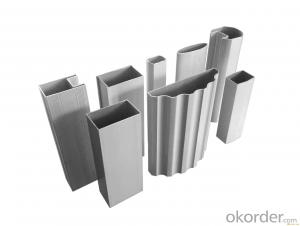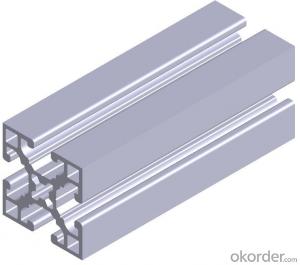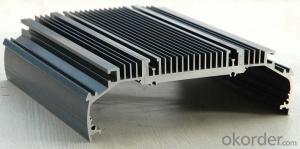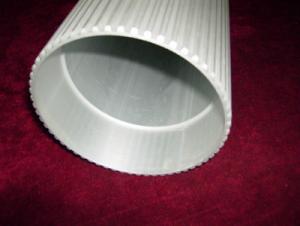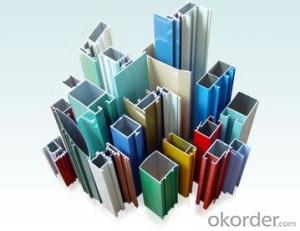Extruded Aluminum Tubing Profiles - Aluminium D-Profile According to European Standards
- Loading Port:
- Shanghai
- Payment Terms:
- TT OR LC
- Min Order Qty:
- 5 m.t.
- Supply Capability:
- 2000 m.t./month
OKorder Service Pledge
OKorder Financial Service
You Might Also Like
Specification
Structure of Aluminium D-profile According to European Standards Description:
Coated aluminum coil/sheet are of a wide range of colors, which gives wonderful appearance no matter in residential and commercial constructions of great exhibition centers.
The coated aluminum coil/sheet have been widely used in the fields of construction and decoration( garage doors, ceiling etc.), electronic appliances, lighting decoration, air-condition air pipes, sandwich panels and drainages etc.
Main Features of the Aluminium D-profile According to European Standards:
1) High flexibility
2) Impact resistance
3) Excellent weather-proof durability
4) Anti-ultraviolet
5) High erosion resist
Images of the Aluminium D-profile According to European Standards:

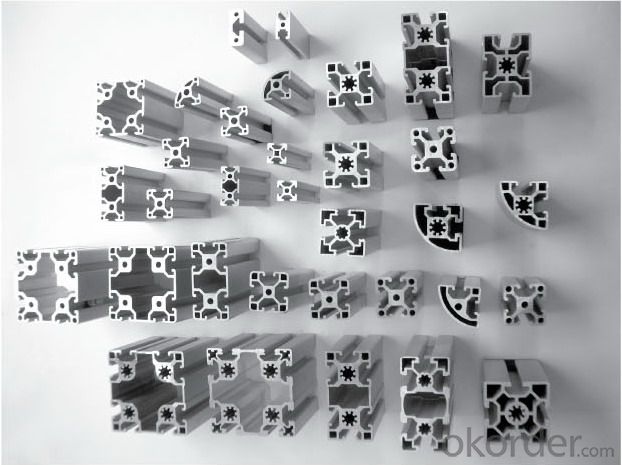
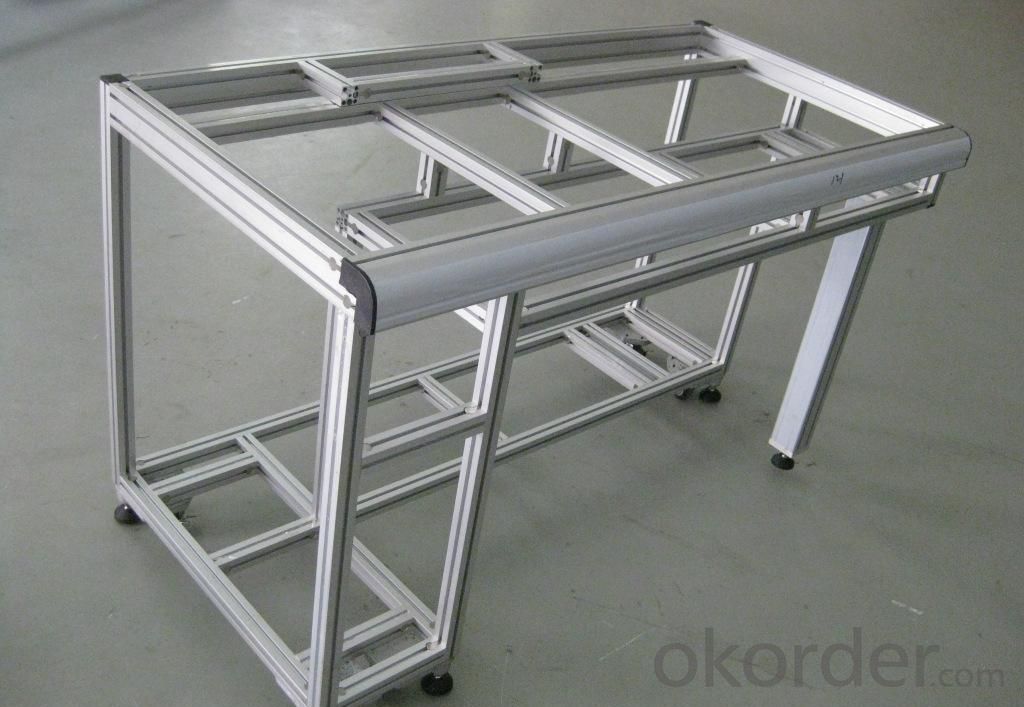
Aluminium D-profile According to European Standards Specification:
Alloy | A1100,A3003,A1050,A8011 etc |
Temper | H16,H18,H24 |
Thickness | From 0.024mm to 1.2mm |
Width | Standard width:1240mm |
Special width:1300mm,1520mm,1570mm,1595mm | |
Diameter | Standard dia:1200mm |
Interior dia:150mm,405mm,505mm | |
Weight | 2.5 T/coil,3.0 T/coil |
Coating | PE, PVDF, AC |
Surface | Embossed, mill finish, coated |
Color | AS to code RAL |
Gloss | 10-90%(EN ISO-2813:1994) |
Coating Thickness | PE: more than 18 micron |
PVDF: more than 25 micron | |
Coating Hardness (pencil resistance) | More than 2h |
Coating adhesion | 5J(EN ISO-2409:1994) |
Impact Resistance | No peeling or cracking(50 kg/cm,ASTMD-2794:1993) |
Flexibility (T-bend) | 2T |
MEK resistance | More than 100 |
FAQ Aluminium D-profile According to European Standards:
a.What is monthly capacity
---CNBM is one stated own company and our monthly capacity is about 2000tons.
b. Now which countries do you export your goods?
---Now we export to South East Asia,Africa, North America,South America ect.
- Q: How do aluminum profiles contribute to sustainable transportation solutions?
- Several ways exist in which aluminum profiles play a significant role in promoting sustainable transportation solutions. To begin, the lightweight nature of aluminum allows for a substantial reduction in vehicle weight, be it cars, buses, trains, or airplanes. This reduction in weight leads to improved fuel efficiency and a decrease in greenhouse gas emissions. By incorporating aluminum profiles into the manufacturing process, vehicles consume less energy and emit fewer pollutants, thereby enhancing their environmentally friendly qualities. Additionally, aluminum is an easily recyclable material, which enables the creation of new aluminum profiles without compromising their quality or performance. This recyclability aspect fosters a circular economy, reducing the constant need for extracting and refining raw materials. Consequently, waste generation is minimized, and the environmental impact associated with the production and disposal of aluminum profiles is significantly reduced. Furthermore, the durability and corrosion-resistant properties of aluminum profiles extend the lifespan of vehicles. This increased durability results in reduced maintenance and replacement needs, thus minimizing resource consumption and waste generation. Ultimately, this contributes to a more sustainable transportation system by lessening the overall environmental impact related to vehicle manufacturing and operation. In addition, aluminum profiles can be designed to optimize aerodynamics and enhance vehicle performance. By reducing drag and optimizing airflow, aluminum profiles contribute to increased fuel efficiency and decreased energy consumption. This improved performance not only benefits the environment but also reduces operational costs for transportation companies and individuals. Overall, the utilization of aluminum profiles in transportation solutions has a positive impact on sustainability. It reduces vehicle weight, promotes recycling, extends lifespan, and enhances performance, all of which contribute to a more eco-friendly and efficient transportation system. By embracing aluminum profiles, the transportation industry can take significant strides towards achieving a more sustainable and greener future.
- Q: What are the manufacturers of aluminum profiles in Jiangsu and Jiangyin?
- Hello, I do not know if you have any requirements to the region, if not, you can consider the manufacturers here in Foshan?Industrial aluminum extrusion machine operation rules and precautions (looking for aluminum profiles manufacturers search: "Foshan bright silver custom")First from the process analysis:1. open aluminum extrusion machine, must ensure that equipment around and on the machine no debris, oil2. prepare the material according to the production request, and then pour into the tank according to the proportion3. check the power status and acknowledge the normal operation of the control cabinet
- Q: You need is the extrusion machine section now has Liaoning Zhong Wang Liaoyuan Midas Nanshan aluminum aluminum Hunan Sheng Guangxi jungle SWA South northeast light alloy etc. they have more than 4500 tons of extrusion machine mainly produces large section comprises a track body profile LED lamp shell container ship with large cross section conductor rail section I is a seamless tube a market analyst if you have aluminum industrial material need to be aware of the problem you can consult me as friends.
- 4500T is not very large extrusion machine, a little aluminum factory are generally, in the hope of Liaoning, Qinghai Guoxin, Yun ore has more than 10000 tons of production lines, more than sixty percent domestic aluminum production is Guangdong Foshan, there are several manufacturers have the production line, such as Albert, Jianmei so, need to understand the aluminum things to find the best side to understand
- Q: What specific coatings or finishes are necessary for aluminum profiles to withstand cold weather conditions?
- <p>In cold climates, aluminum profiles may require special coatings or finishes to enhance durability and resistance to corrosion. These can include anodizing, which forms a protective oxide layer on the aluminum surface, or powder coating, which provides a hard, durable finish. Additionally, thermal breaks may be incorporated into the design to reduce heat transfer and prevent condensation. It's crucial to select the right finish based on the specific environmental conditions and the intended use of the aluminum profile.</p>
- Q: Are there any limitations on the length of aluminum profiles?
- Yes, there are limitations on the length of aluminum profiles. The length of aluminum profiles is typically limited by the practical constraints of transportation and handling. Longer profiles may be more difficult to transport and may require special equipment or transportation methods. Additionally, longer profiles may be more prone to bending or warping, which can affect their structural integrity. Therefore, manufacturers often have specific maximum lengths for aluminum profiles based on these considerations.
- Q: Can aluminum profiles be used in modular exhibition system manufacturing?
- Yes, aluminum profiles can be used in modular exhibition system manufacturing. Aluminum profiles are known for their lightweight and durable properties, making them ideal for constructing modular exhibition systems. They are easy to handle and assemble, allowing for quick and efficient installation and dismantling of exhibition booths. Additionally, aluminum profiles can be easily customized and reconfigured to meet specific design requirements, making them a versatile choice for modular exhibition system manufacturing.
- Q: This question asks for an enumeration of the various types of aluminum profiles that are commonly utilized in interior wall systems.
- <p>Aluminum profiles for interior wall systems come in various types, each serving a specific purpose. These include: 1. Cover Profiles, which conceal the joints between wall panels; 2. Angle Profiles, used for creating corners and edges; 3. Connecting Profiles, facilitating the attachment of panels; 4. Support Profiles, providing structural support; 5. Joint Profiles, for aligning and securing panels at their joints; 6. Decorative Profiles, adding aesthetic appeal; 7. Insulation Profiles, for thermal insulation; and 8. Sealing Profiles, to prevent air and moisture infiltration. Each type of profile is designed to meet specific architectural and functional requirements, contributing to the overall integrity and appearance of the interior wall system.</p>
- Q: Excuse me, aluminum oxidation and electrophoresis have what different?
- Electrophoresis aluminum:The oxidized aluminum material is used as an anode and is placed in a water-soluble emulsion, and the coating is deposited on the surface of the aluminum oxide film by the direct current to form an electrophoretic aluminum material
- Q: Can aluminum profiles be used for stage and event structures?
- Stage and event structures can indeed make use of aluminum profiles. Aluminum, being both lightweight and durable, is a widely utilized material in the construction industry for a range of purposes, including stage and event structures. Aluminum profiles possess versatility, allowing for easy shaping, cutting, and joining to create customized structures. With an excellent strength-to-weight ratio, they are well-suited for supporting heavy equipment and ensuring the safety of performers and audience members. Moreover, aluminum profiles can be powder-coated or anodized, providing both a decorative finish and protection against corrosion. This enhances the visual appeal and longevity of the structures. In conclusion, aluminum profiles are a popular option for stage and event structures due to their versatility, strength, and aesthetic qualities.
- Q: This question asks whether aluminum profiles can be utilized for constructing exterior walls and seeks reasons for their potential use.
- <p>Yes, aluminum profiles can be used for exterior walls. They are chosen for their durability, corrosion resistance, and low maintenance requirements. Aluminum is lightweight, which makes it easier to handle and install. It also has excellent thermal performance, allowing for energy-efficient construction. Additionally, aluminum profiles can be powder coated or anodized, offering a wide range of colors and finishes, enhancing the aesthetic appeal of the building. Their strength and flexibility make them suitable for various architectural designs and structural applications.</p>
Send your message to us
Extruded Aluminum Tubing Profiles - Aluminium D-Profile According to European Standards
- Loading Port:
- Shanghai
- Payment Terms:
- TT OR LC
- Min Order Qty:
- 5 m.t.
- Supply Capability:
- 2000 m.t./month
OKorder Service Pledge
OKorder Financial Service
Similar products
Hot products
Hot Searches
Related keywords












